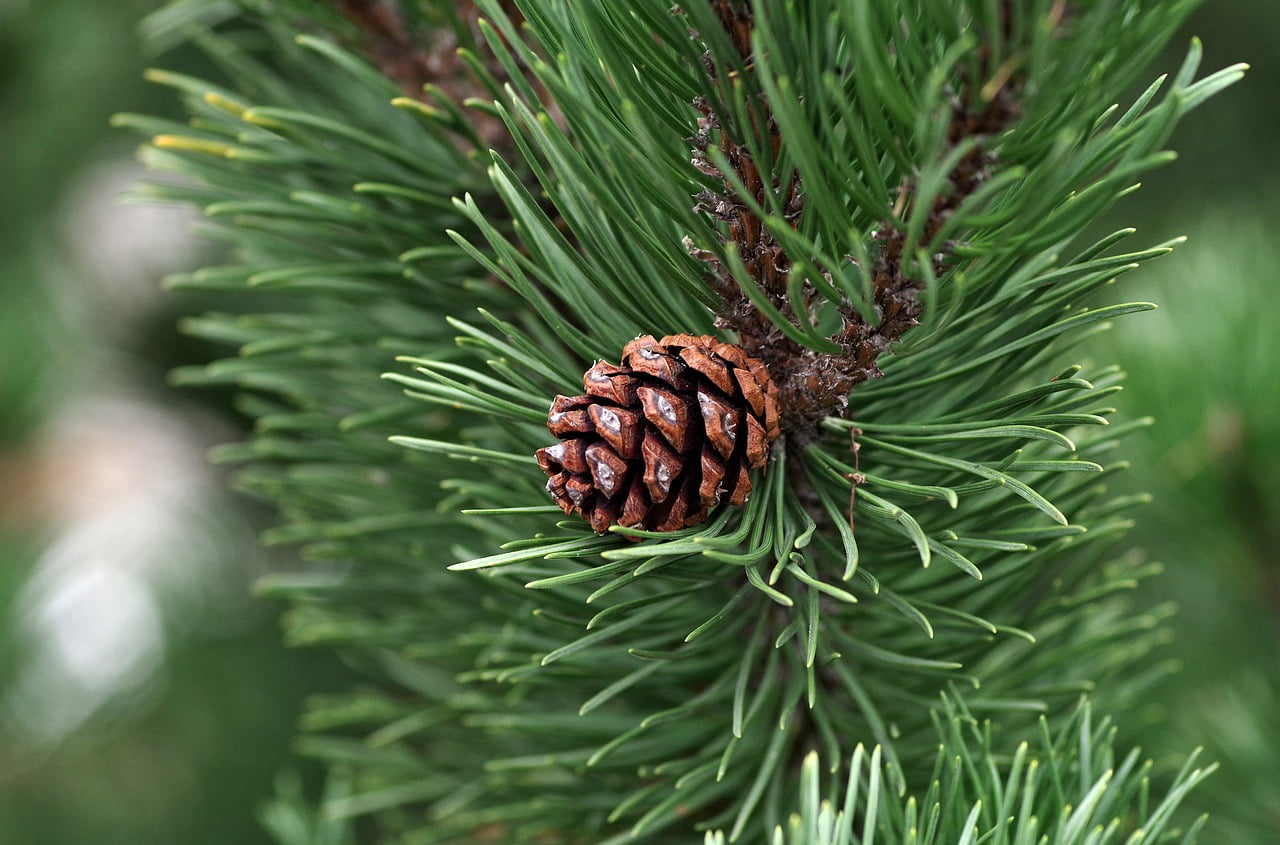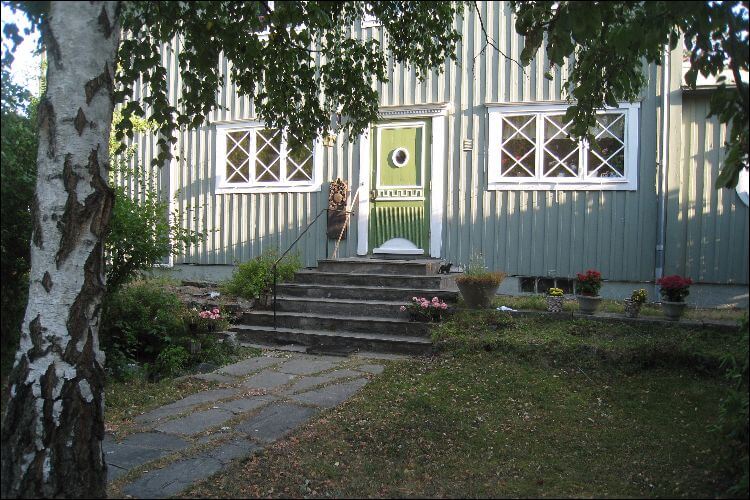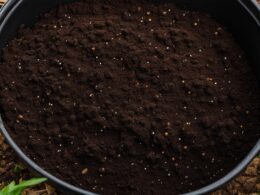Are you considering planting some trees in your yard? Trees can add so much beauty to your yard. Some types of trees bear fruit, while others are sturdy enough for you to hang a hammock on (if you know how to hang a hammock ) and relax.
Pine trees come in many different types. They can bring shade to your home, a comfy place to hang a hammock, and grow beautiful pine cones for you to decorate with. If you are considering growing pine trees in your yard, read on. This article is all about pine trees, the pros and cons of planting pine trees in your yard, effective ways to remove pine needles from your lawn, and things to consider before you plant pine trees. Enjoy!
Types of Pine Trees
There are about 115 kinds of pine trees in the world. However, some of them are more common than others. Because there are so many different varieties of pine trees, I’ll list some of the most common types.
- Bristlecone Pine: Also known as Hickory pine and Rocky Mountain bristlecone pine, this pine tree can grow to be 8-30 feet tall and 10-15 feet wide. It does well in zones 4 to 7.
- Colorado Blue Spruce: This is actually a spruce tree, but it makes a great tree to grow in your yard. It is full and makes a beautiful Christmas tree. It thrives in zones 3 to 8.
- Coulter Pine: This pine tree is also called big cone pine, nut pine, pitch pine, and slash pine. It grows to be 40-80 feet tall and 20-40 feet wide. This pine tree thrives in zones 8 to 9.
- Douglas Fir: Although it has the word “fir” in it, this tree is actually not considered a fir. In fact, it has been called many things, including a spruce, fir, and pine. The Douglas Fir is officially an evergreen. It is an excellent species for landscaping with evergreen. Pine trees are part of the evergreen tree family.
- Engelmann’s Spruce: Once again, this is a spruce, not a pine tree. However, it makes a perfect tree to plant in your yard. It grows in zones 3 to 7.
- Japanese Black Pine: Although this pine tree is native to Japan, it has been grown in the USA as well. This pine tree grows best in zones 5 to 8.
- Japanese White Pine: Once again this is a pine tree that is native to Japan. It does best in zones 4 to 7.
- Limber Pine: This pine tree thrives in zones 4 to 7.
- Lodgepole Pine: Also called beach pine, shore pine, coast pine, Bolander pine, Sierra lodgepole pine, tamarack pine, Rocky Mountain lodgepole pine, and black pine, this pine tree is native to North America and thrives in zones 4 to 8.
- Mugo Pine: Best known as mountain pine, this is a smaller pine tree that is more like a shrub. It grows in zones 2 to 7.
- Ponderosa Pine: This pine tree can grow to be 60-100 feet tall and 25-30 feet wide. It prefers zones 3 to 7.
Pine Tree Care
Caring for pine trees is not as hard as you may think. However, it is important that you care for them properly to prevent them from dying. If they do die, you should fell them so that there is room for other healthy trees to grow. I’ll go into detail about how to properly remove dead trees. As for now, here is how to care for a live pine tree.
Proper Soil and Sun
Two things pine trees must have to survive are soil and sun. And it’s not just any soil they can thrive on. Pine trees benefit from well-drained soil that’s rich in nutrients. They need lots of soil around their roots. If you are transplanting a pine tree into your yard, it can be challenging because you must get their deep tap roots into the soil. As for the sun, it is important that your pine trees can get full sun. If any of your pine trees die, it is important that you remove them so that your other pine trees can get full sun. Also, make sure none of your pine trees are blocking other pine trees from receiving the sun.
Water and Mulch
The next two things that pine trees need to survive and thrive are water and mulch. Keep in mind that some pine trees are drought-tolerant, and those in damp climates don’t need watering other than rainfall. The only times you need to water pines are during dry winters, when they need a thorough soaking once a month. To prevent water stress, apply a layer of mulch around the base of the pine trees. The mulch helps the soil retain water and prevents weeds from sprouting and stealing the pine tree’s nutrients.
Fertilizer
Fertilizer is also important for pine trees. Slow-release fertilizer helps young pine trees grow and mature pines remain healthy. Although mature pine trees can handle quick-release fertilizer, it may burn the sensitive roots of young pine trees. Starting with the second year of growth, pine trees need 2 to 4 pounds of a balanced fertilizer per 100 square feet of bedding. Fertilizer that has 10-10-10 ratio of nitrogen works great for pine trees. If your pine trees are large and in the open, you should measure the diameter of the trees’ trunks and apply 2 pounds of fertilizer per 1 inch of diameter for each tree.
Pruning
For most trees, pruning is necessary in order for the trees to remain healthy. However, pine trees don’t need as much pruning as other trees. In fact, too much pruning can do more harm than good. You can control the size and shape of your pine trees with light trims in late winter, but as evergreens, they won’t sprout new growth from the inactive centers, behind the green needles. This means that heavy pruning can leave pine trees bare and thin for years. The only time pruning is extremely necessary is when you need to remove a dead or diseased limb back to the branch collar, which is the swollen area at the trunk. When cutting off a diseased branch, it’s safest to wait until dry weather, as infected spores can easily contaminate pruning tools in wet weather, passing the disease onto other parts of the tree or to other trees.
Fall Dead Trees
If you notice that one of your pine trees is dead, it is important that you fell it. This should be done so that people and buildings remain safe, as well as give other trees more room and sunlight to grow. Of course, you should consider if your tree is actually dead or not. If over 50% of the tree’s body is damaged, the tree may still live but it will never be completely healthy again. It is best to cut down a tree that is damaged 50% or more. If you notice vertical cracks, dead branch stubs, large old wounds, or anything else like that on the trunk, the tree might be suffering internally. If over 25% of the circumference of the trunk is damaged, it is time to cut the tree down. It won’t heal itself unless it is less than 25%.
Another way to know if it is time to cut down your pine tree is if 1/3 of the interior is hollow. If so, cut it down. Hollow trees can sometimes live for a long time, but they can become a hazard if a storm came. If the pine tree has a lot of dead branches – over 25% of the branches are dead – it is time to cut the tree down. Also, if fungus is growing on the tree, not just around the tree, it is a sign that it is diseased and must be cut down. Lastly, if the tree is leaning over 15% off vertical, you should cut it down since it may fall and hurt someone.
Pros and Cons of Planting Pine Trees
While you may think there are no disadvantages to planting pine trees, unfortunately there are. Here is a list of the pros and cons of planting pine trees ion your yard.
- Pro: Pine trees can add beauty to your yard. All trees are nice looking, but pine trees stay green all year long. Depending on what type you got, you may be able to string lights around it for Christmas to improve the look of your yard. There are many stunning ways to upgrade your backyard by landscaping with trees.
- Con: Pine trees need soil that is well-drained and rich in nutrients. Besides this, they need an acidic soil pH below 7.0 to thrive. Alkaline soils can cause chlorosis, or yellowing of the needles, as well as poor growth rates and stunted growth.
- Pro: Pine trees provide privacy from neighbors.
- Con: Pine trees have their own specific diseases. Pine wilt is one common disease that is spread by a nematode carried by beetles. Soon after infection, the needles turn reddish-brown and the tree dies. There’s nothing you can do to save the tree. Instead, you must remove it from the area and get rid of it to prevent the disease from spreading. Another disease is needlecast, which is caused by a fungus and also affects pines. The needles die, and without a fungicide treatment, the tree may die.
- Pro: Pine trees grow pine cones, which can be great for decorating. There are so many things to make from pine cones, including ornaments, wreaths, bird feeders, and so much more.
- Con: Although the cones may be pretty and fun to use, for some people the pine cones can also be a problem. If they are not removed from the lawn, you may accidentally mow over it when you mow the lawn. Also, it may become a chore to pick up all the pine cones. If you don’t pick them up, soon your entire yard will be full of pine cones.
- Pro: The pine needles have a nice fragrance, and can make your yard smell nice.
- Con: The pine needles will fall onto your yard. Pine needles are more difficult to rake up than other tree leaves.
- Pro: Pine trees do not need pruned as much as other trees do.
- Con: Pine trees produce a sticky sap. The sap can get all over your hands if you try to collect the needles or cones that fall around the tree. The sap also attracts insects. Some of these insects are beneficial, but other insects such as beetles and weevils are also attracted by the sap and they then cause damage to the tree when they bore into the wood.
Can I Use My Christmas Tree for Planting Pine Trees in My Yard?
Can I use my Christmas tree to dispose of real Christmas tree? Yes, you can repurpose your Christmas tree by planting pine trees in your yard. Instead of throwing it away, recycle your tree by cutting off branches and using them for mulch or making a bird feeder. Plant the tree in a suitable location and enjoy a sustainable way of disposing of your Christmas tree.
Effective Ways to Remove Pine Needles from Your Lawn
Like I mentioned above, one of the cons of growing pine trees is that they drop needles. While the needles may be fragrant, too many on your yard will not only make your lawn not look as nice, but it can also damage the soil if there are too many pine needles. Unfortunately, pine needles are much harder to rake than it is to rake up other tree leaves. However, there are a few tips for getting those pine needles off your lawn. Here are some helpful ways to do so:
Use a Lawn Mower
A lawn mower won’t remove all the needles, but it may remove some of them. It is important that you have a bag on the lawn mower so that the pine needles don’t return right back to the ground. Keep in mind that mulch mowing will not work on pine needles.
Use a Rake
If you decide to use the lawn mower to remove pine needles, you may find that some of the pine needles are still on the ground. To remove those pine needles, you’ll need to use a rake. Rake up all the remaining pine needles and put them in a bag. Once raked and bagged, you can use them as mulch in a flower garden or landscaping, but keep in mind that pine needles have an acidic content, so use them sparingly.
Use a Rake Specifically Made for Pine Needles
Also called The Comb, you can purchase rakes that are specifically made for pine needles. They work better than regular rakes and make the job go much faster. You can find such rakes on pinecomb.com.
Things to Consider
Where will you plant the tree?
Consider where you will plant the tree in your yard. Keep in mind that pine trees should be planted at least 20 feet away from your house to prevent it from damaging your home if they fall. Also, only get a pine tree that will grow to be the desired height you need.
What is your soil like?
While many people have said that pine trees can grow in poor soil, pine trees thrive in soil that is rich in nutrients. In addition to that, if you plant the pine tree near water or in rocky soil, it will have a shallow root system. Consider if you have the proper environment to grow pine trees.
Which type do you want?
This is something that only you can decide. Of course, don’t get a tree that will grow to be very tall if you can’t have tall trees.
Final Thoughts
Are you wanting to plant some trees in your yard? Consider planting pine trees. Although they do require the right soil and plenty of sunlight, overall they are easy to grow. They do not need pruning often as other trees do, and most types do not need watering often.
Keep in mind that pine trees will drop pine needles, but with the right tools, you can easily pick up the pine needles off your lawn.
Before you plant your pine trees, you’ll want to go over the considerations that I gave you in this article. Such considerations include what your soil is like, where you will plant your tree, and what type of tree you want. Have fun deciding which type of pine trees will work best for you, and hopefully, you find some that will fit your needs.














Hi,
I have a large pine tree in my garden and it appears the roots are damaging my neighbours fence panels and posts.
If some of the trees problem roots were to be cut would the tree survive?
Thanks